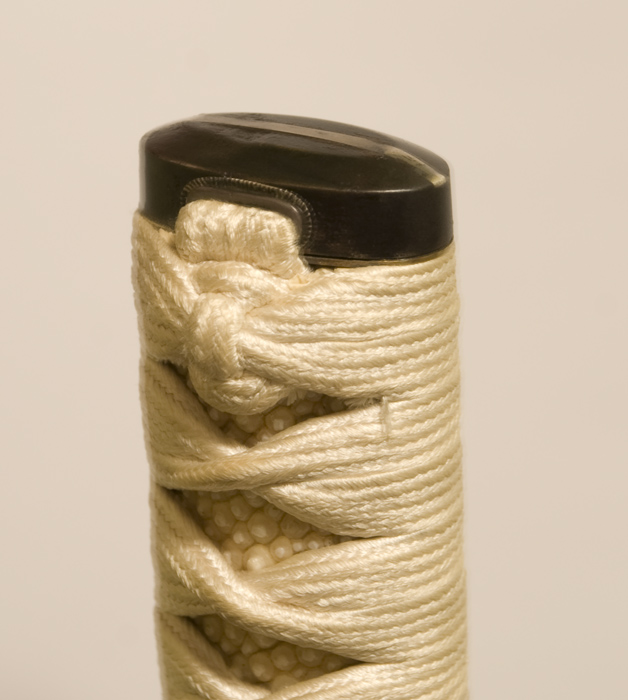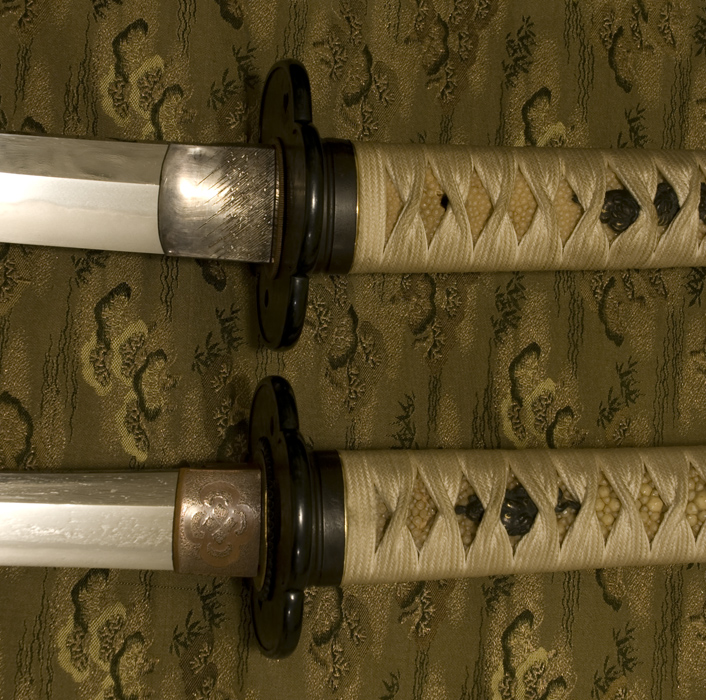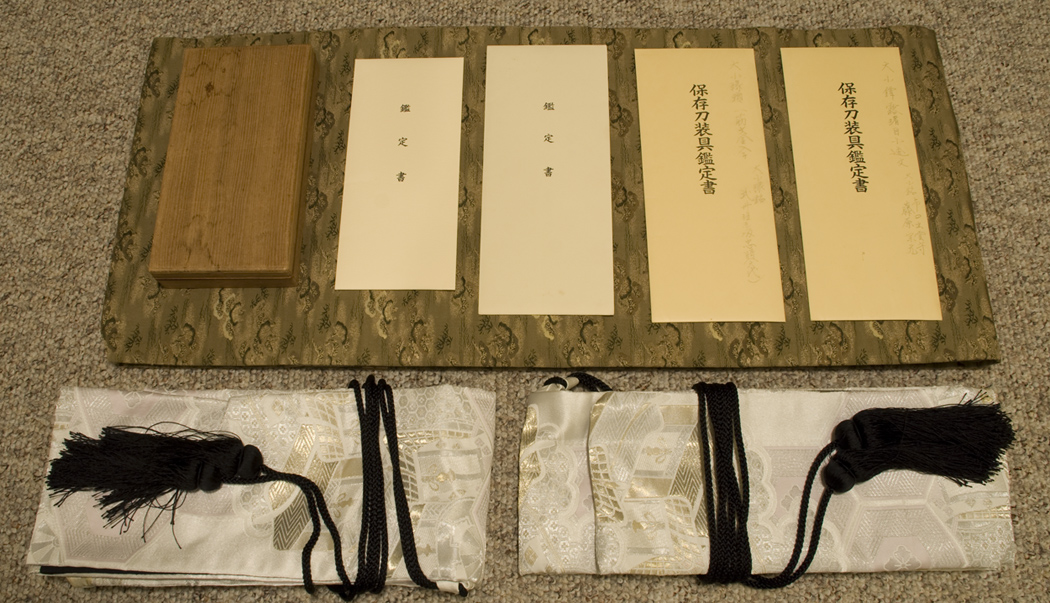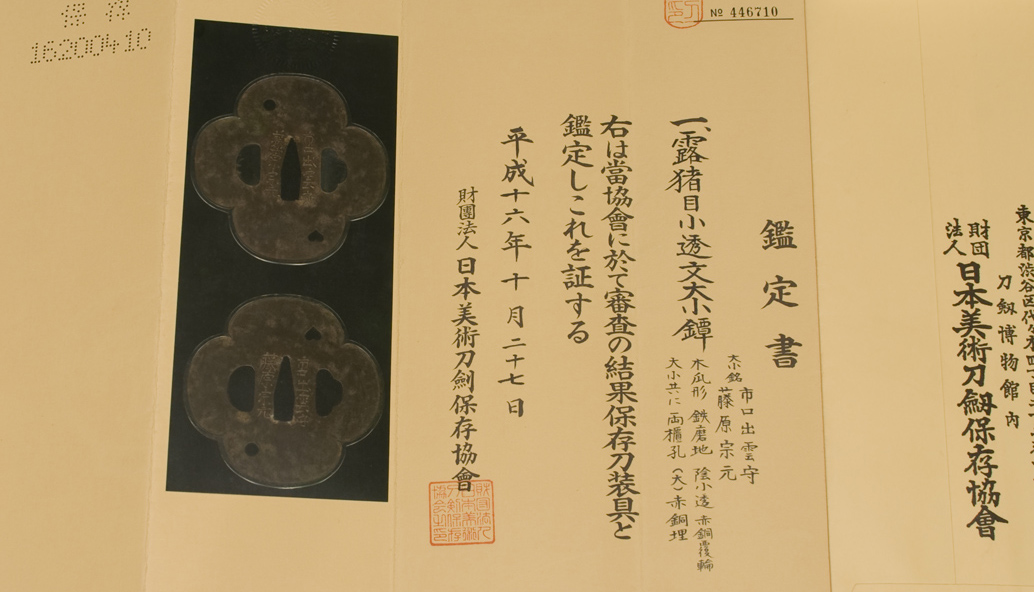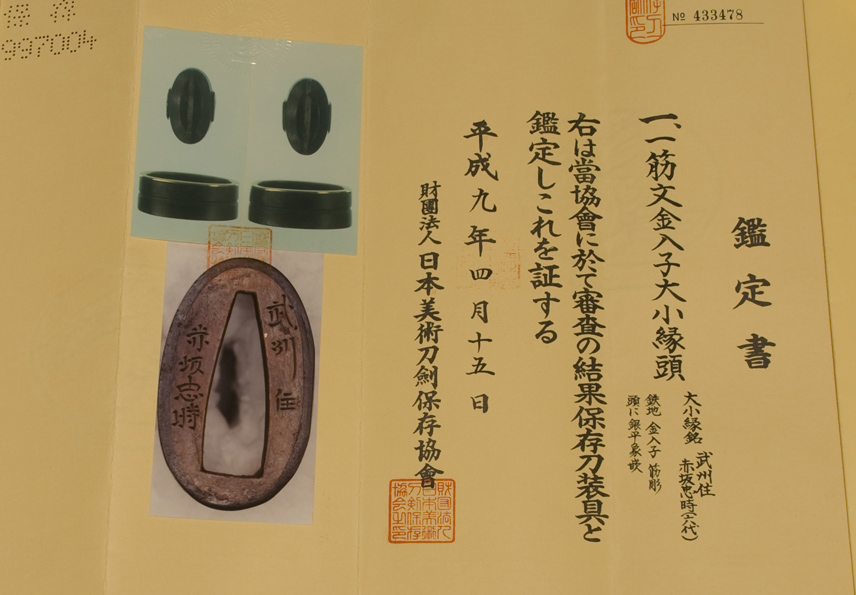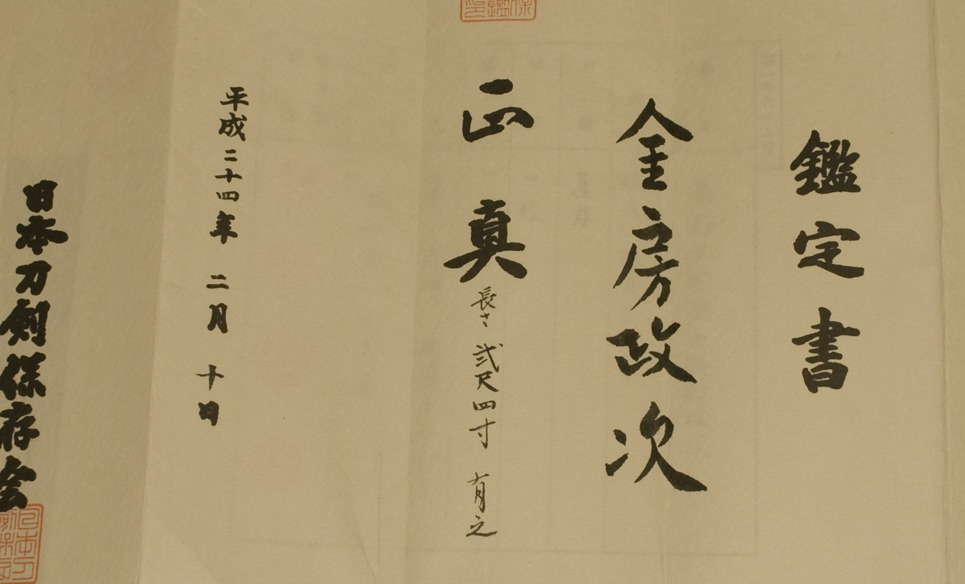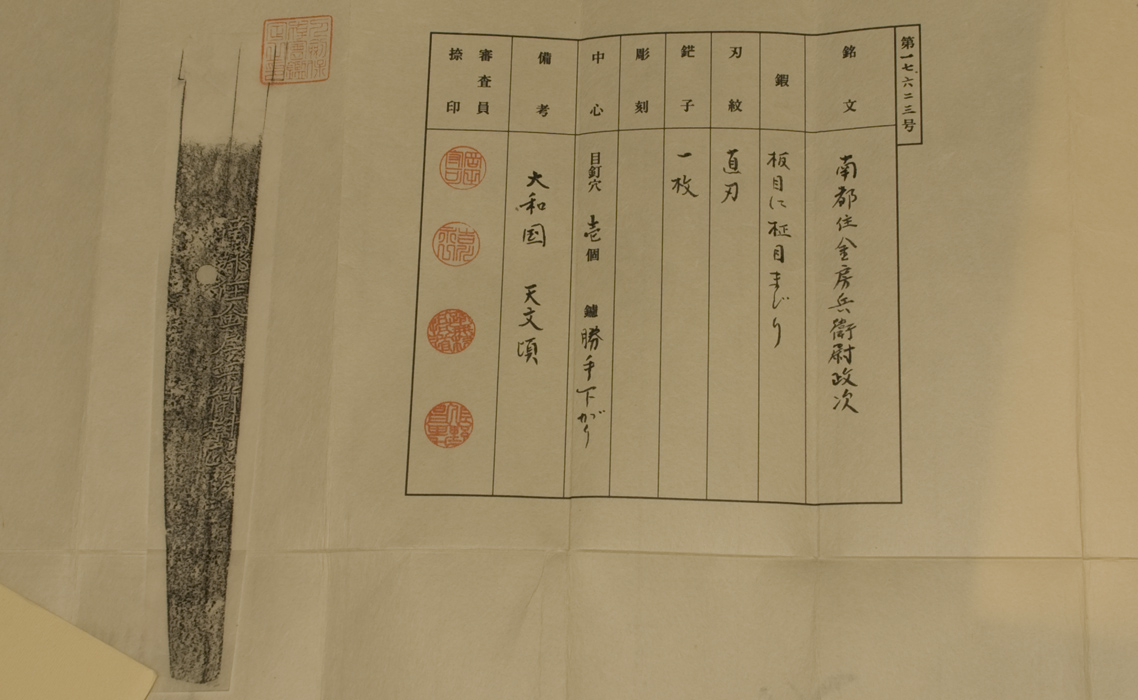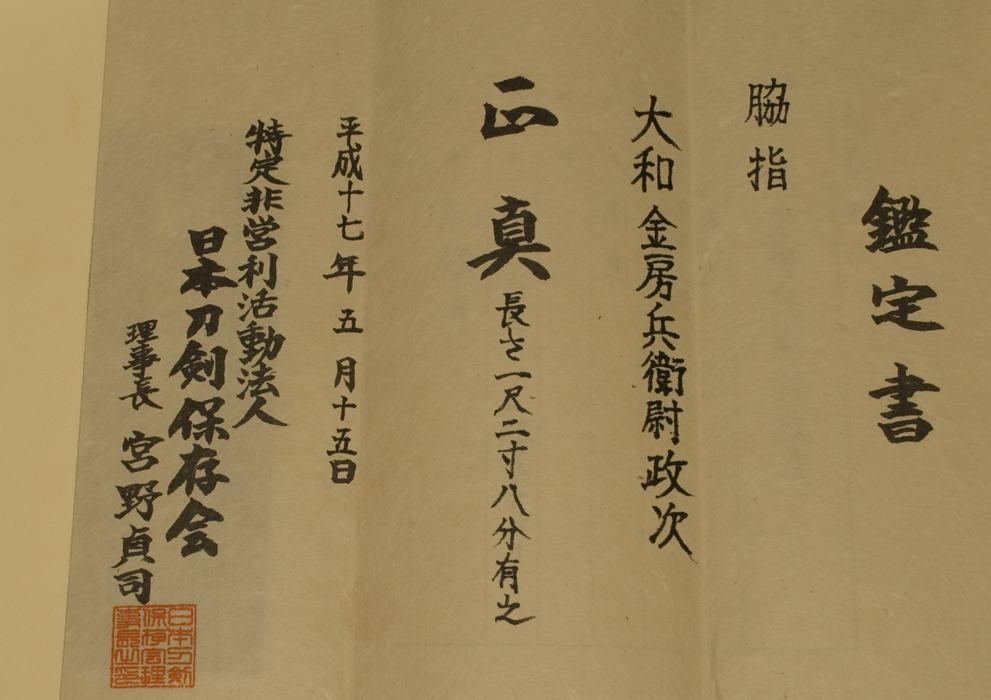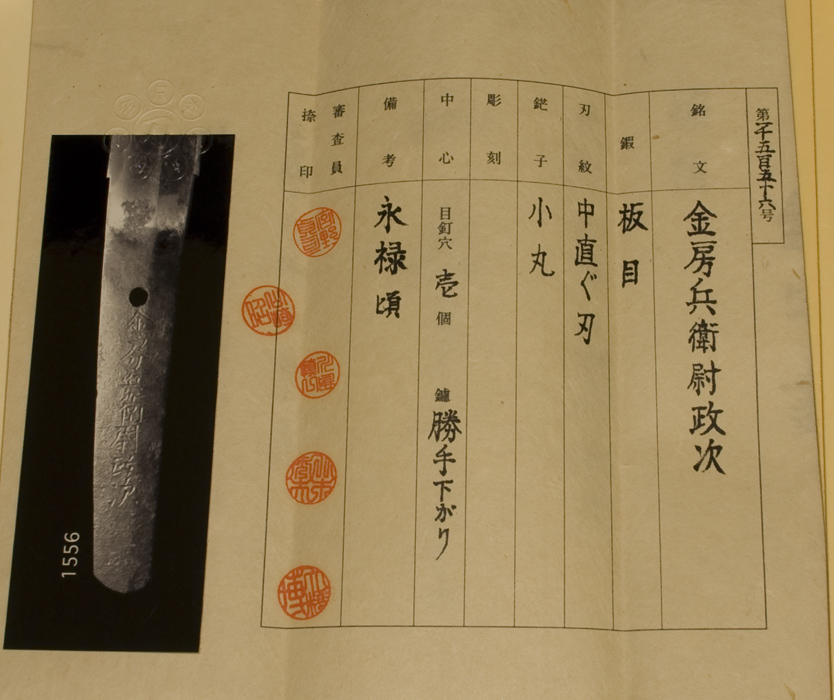|
| |||||||||||||||||||||||||||||||||||||||||||||
Hamon : Katana: Hiro suguha with a tight nioiguchi. Ko-nie deki. Small ashi and yo can be seen all along the hamon. Gunnome in a suguha tone is mixed in.
Wakizashi: Ko-nie deki suguha. The nioi guchi is tight. Kuchigaiba, inazuma and nijuba can be seen.
Boshi : Katana: Ichimai on both sides with a long return and active nie hataraki.
Wakizashi: Ko-maru with hakkekake.
Kitae : Katana: Ko-itame with shirake utsuri near the shinogi-ji. Ji nie is present and there is mune yaki.
Wakizashi: Itame with some ohada. Ji-nie is present and there shirake utsuri overall.
About Kanabo Munetsugu : The following information is from the Tokotaikan pg 595 and 596
Masatsugu 3 million yen (ranking) Tenmon (period) Yamato (location)
This smith was active around Tenmon to Koji (1532-1557) His style is wide mihaba with long kissaki with a thick, very strong, robust shape. Itame mixed with masame that is hada-tachi with ji-nie. Hamon has a tight nioi-guchi. Hiro-suguha, ko-midare, gunome-midare are seen. There is ashi & yo inside hamon and his horimono tends to be complicated.
Masatsugu 3 million yen (ranking) Koji (1555-1558) Yamato (location)
Younger brother of the previous Masatsugu and similar style of work.
In addition to the two Masatsugu listed above, the Nihonto Meikan, 2nd edition, page 909 also lists a 3rd one. He was the son of the first generation and was active around Tensho.
About this Daisho : This is a niice daisho with a fine matching koshirae. The blades are both ubu and zaimei by Kanabo Masatsugu. The katana is by the shodai and dates to the Tenbun nengo (circa 1532). The wakizashi could be by the first or second generation and dates to the Eiroku nengo (circa 1558) The katana is a very powerful and robust blade with a nagasa of 73 cm (almost 29 inches), moto haba of 3.2 cm and a saki haba of 2.4cm. The shodai was known for making very large blades like this. It is a text-book example of his most often encountered work-style. It has been professionally polished in recent years and is quite powerfull to behold. With the nakago included the entire blade is almost 100 cm long. The wakizashi is in old polish with some scratches and blemishes. You can see all the activity in the blade but it is not as nicely polished as the katana. The wakizashi is showing its age of over 550 years and there is some coarse hada. It is ubu and fully singed and even showing fumbari very clearly.
The Koshiare for this daisho has been professorially restored. Missing tosogu were replaced by desirable papered examples. The fuchi kashira sets are both matching and signed by Akasaka Tadatoki. It is accompanied by a NBTHK Hozon paper that attributes these matching fuchi kashira to the third Tadatoki (the sixth generation of the Akasaka family). This Tadatoki died in 1796. This daisho set of fuchi kashira are a quite exciting all by themselves. Sigend a Akasaka fuchi kashira are very rare and this maker is actively collected by many admirers of tosogu. The matching daisho tsuba are equally fine. Both are fully signed "Izumo no Kami Fujiwara Munemoto" and are in excellent condition. These have a iron ji with a chocolate brown patina. Each one has a finely fitted shakudo fukurin. These come with the deluxe daisho tsuba box shown in the photos. There are quality shakudo menuki of tigers with gold details. Both sets match. The base of the tsuka and the saya are all antique. When this was restored, the sayas were re-lacquered, the same replaced and the tsukas were re-wrapped. The finished result is quite beautiful.
This daisho comes with 4 papers. There is a NTHK (Yoshikawa) paper for the katana, a NTHK (NPO) paper for the wakizashi, NBTHK Hozon paper for the pair of Tsuba and a NBTHK Hozon paper for the diasho fuchi kashira. Also included are two fine storage bags. A Daisho such as this is a dream come true for most of us. Please enjoy the nearly 40 photos shown below.

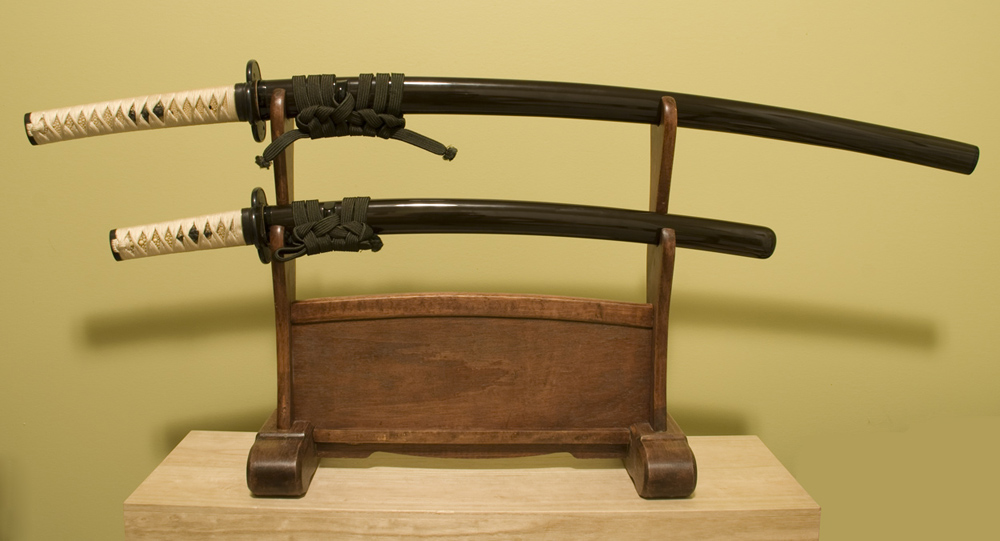

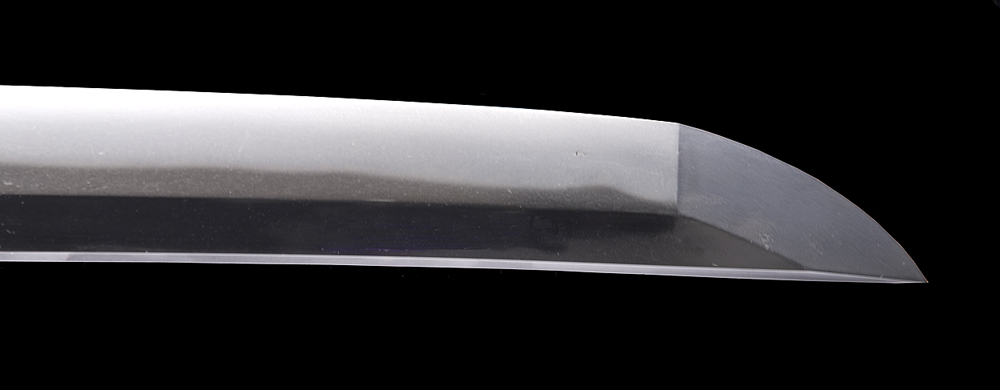

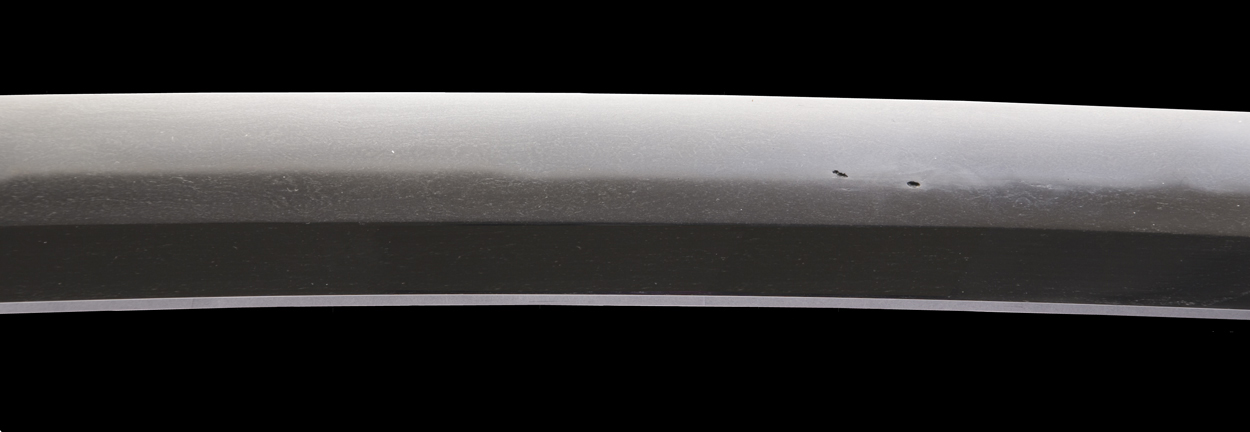






 |

|





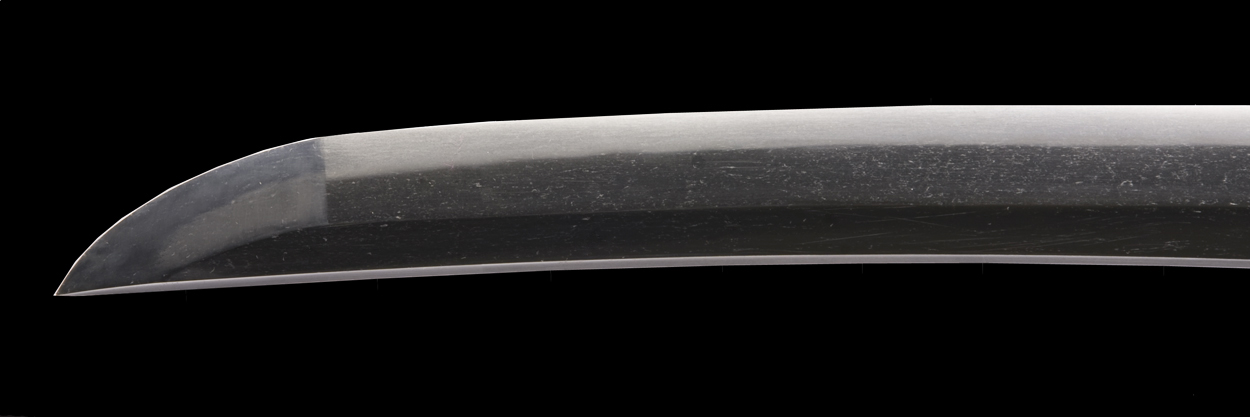



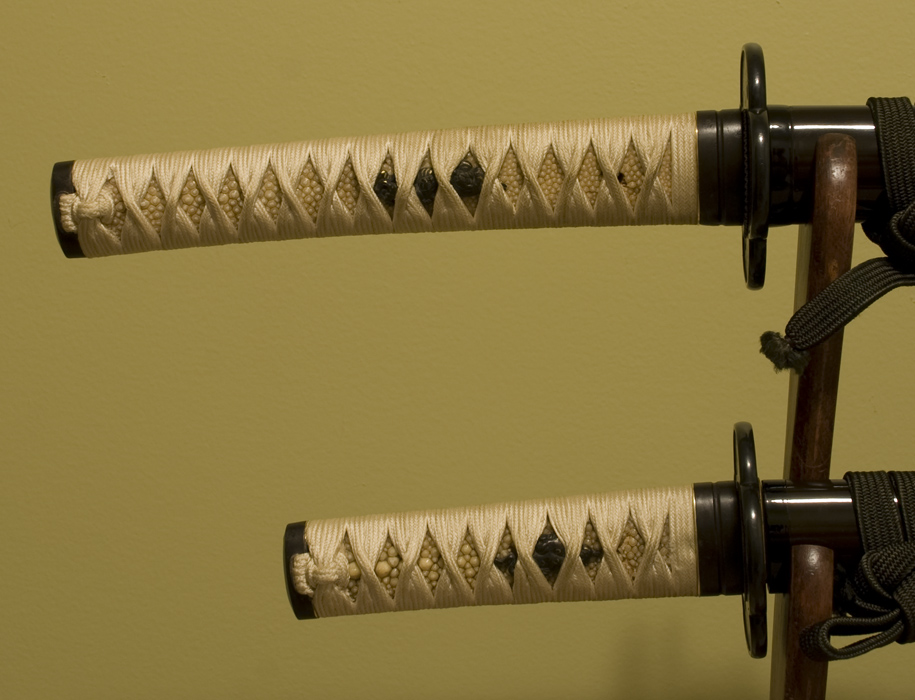
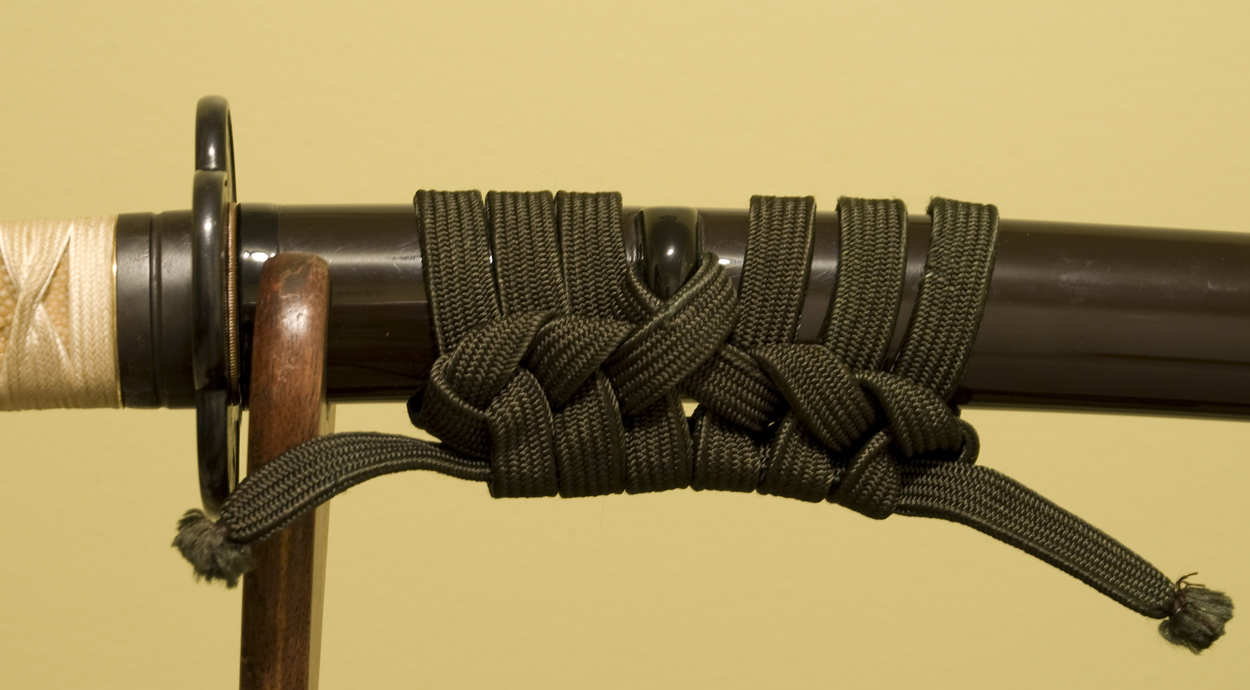
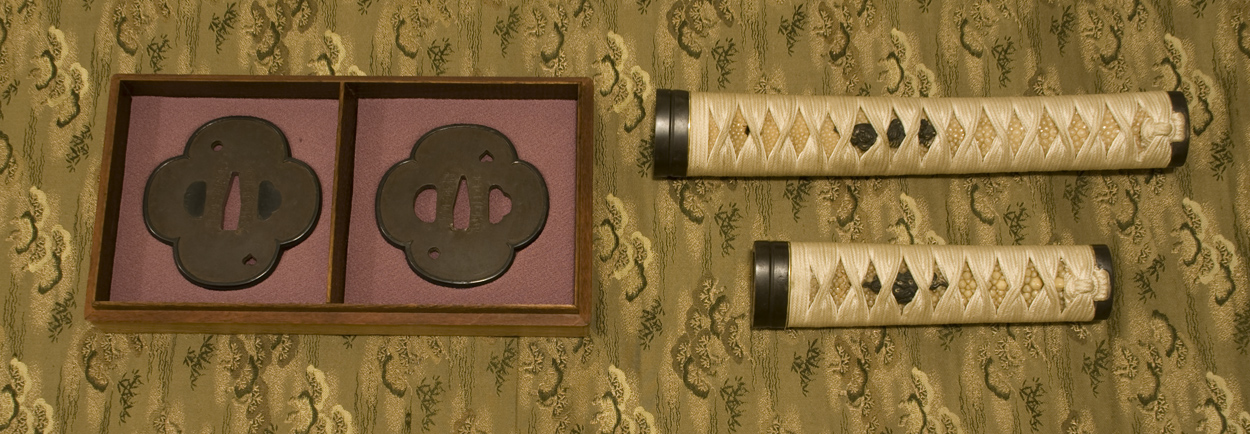
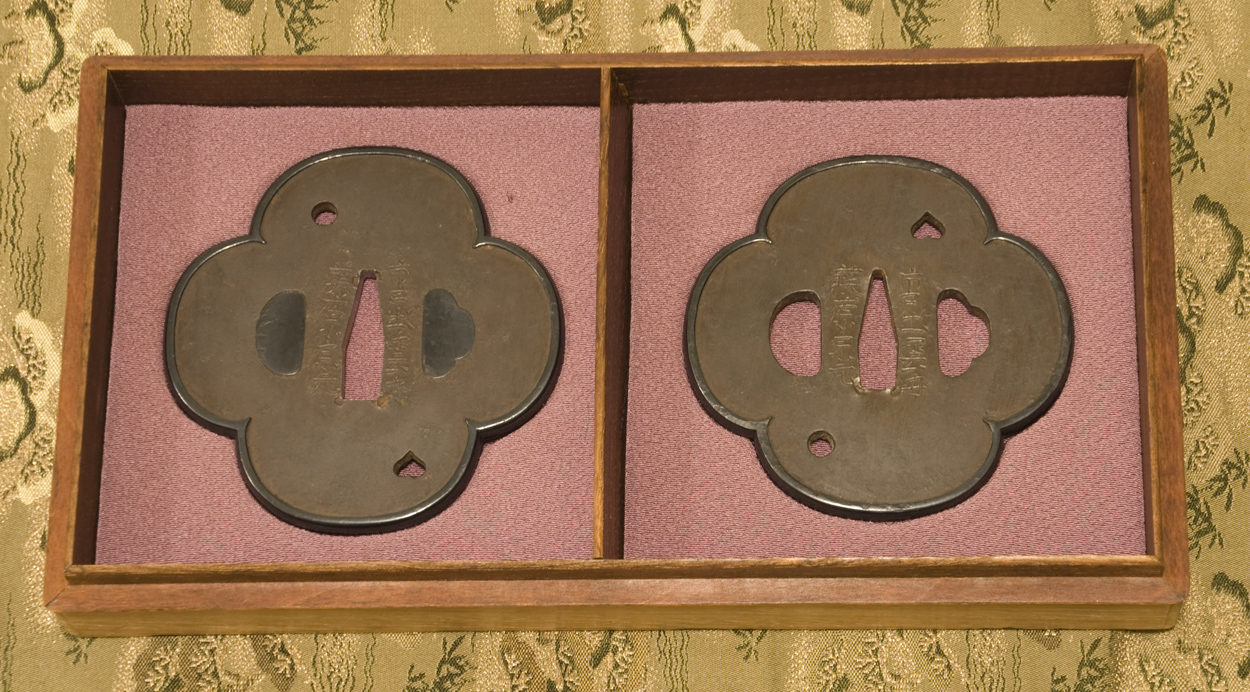

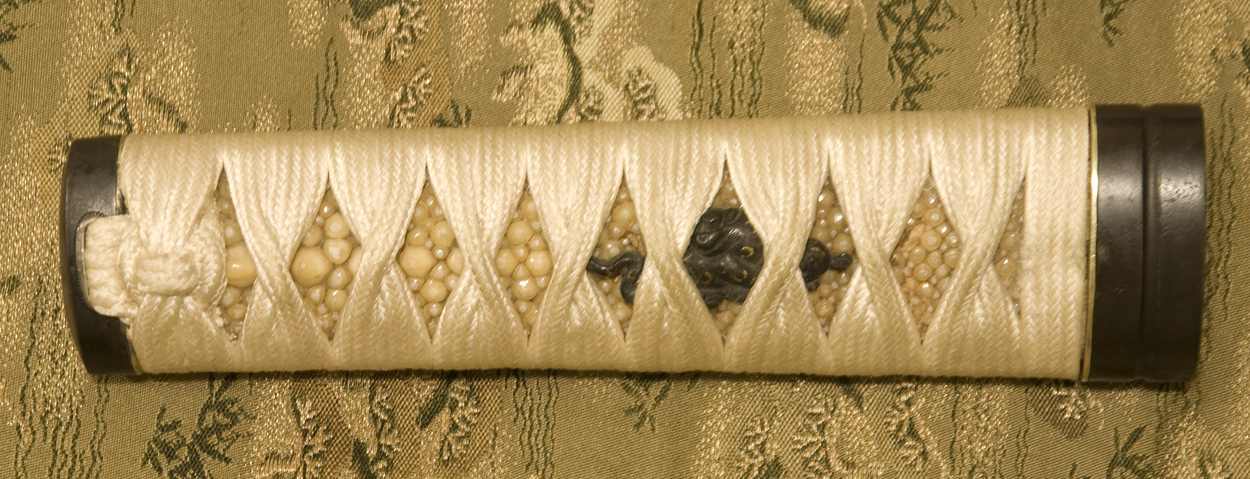
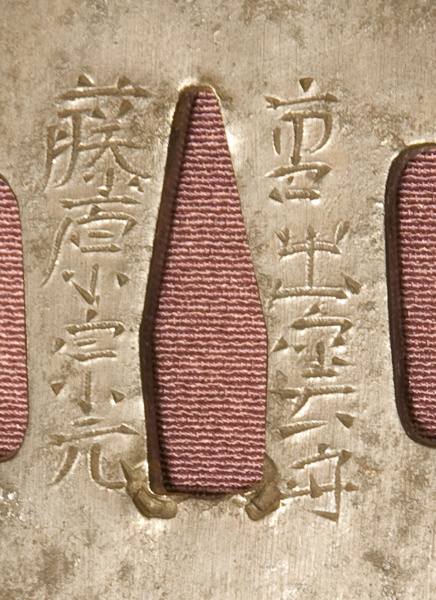
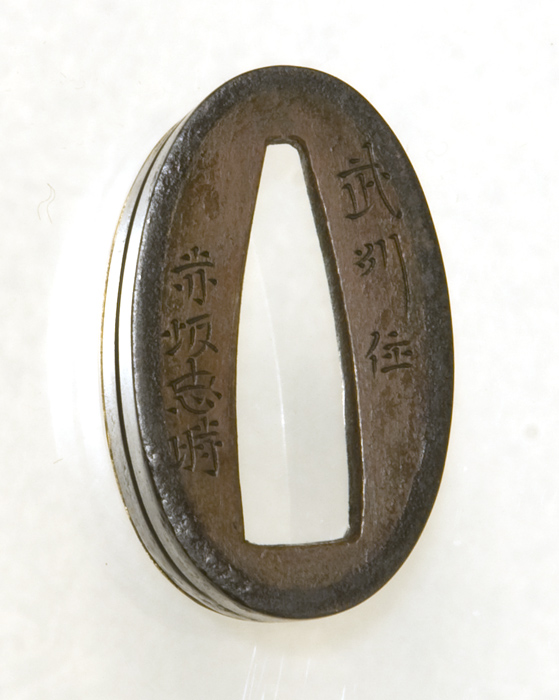 |
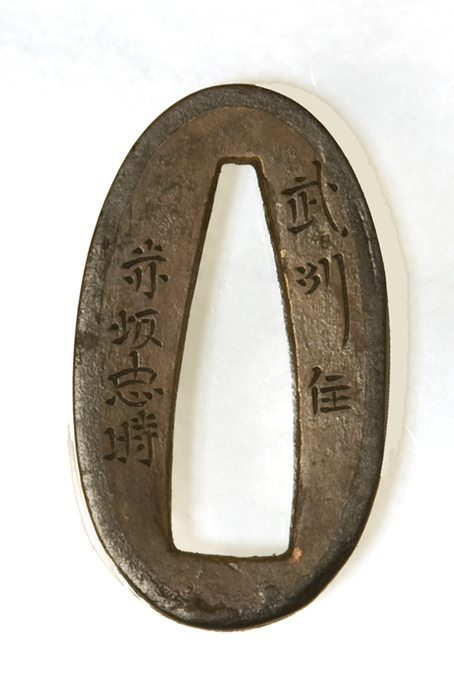
|
